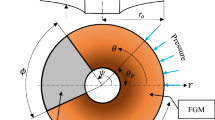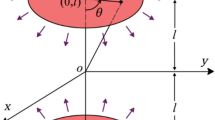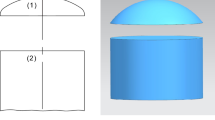Abstract
A NOTE in NATURE, August 22, p. 491, referring to a recent article by Mr. H. Haerle, says: “The problem of ascertaining the distribution and magnitudes of the stresses in a revolving disc by means of mathematical formulæ is tedious and complicated. With the exception of the cases of discs of constant thickness and constant strength, for which definite integrals can be found, the analytical solution involves highly complex equations, and the ultimate result is doubtful.” May I point out that the ordinary approximate solution for the rotating circular disc of uniform thickness, whether complete or holed, involves only simple powers of the radius vector? The corresponding solution for the thin elliptical disc involves expressions of an equally elementary type, though naturally longer. But in addition we have possessed for more than twenty years (see Proc. Roy. Soc, vol. lviii., p. 39) a complete solution for an ellipsoid of any shape rotating about a principal axis. This involves only simple powers of the variables x, y, z, and it applies, of course, to discs of very varied shapes. All the ordinary elastic solid equations, whether internal or external, are exactly satisfied in this case. Thus the uncertainties are only those inevitable through the difference between the ideal elastic solid problem and its realisation in practice.
Similar content being viewed by others
Article PDF
Rights and permissions
About this article
Cite this article
CHREE, C. Rotating Discs. Nature 101, 504 (1918). https://doi.org/10.1038/101504c0
Issue date:
DOI: https://doi.org/10.1038/101504c0



